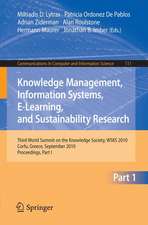Essential Java Fast: How to write object oriented software for the Internet: Essential Series
Autor John Cowellen Limba Engleză Paperback – 18 feb 1997
Din seria Essential Series
-
 Preț: 40.82 lei
Preț: 40.82 lei - 20%
 Preț: 333.72 lei
Preț: 333.72 lei - 20%
 Preț: 334.86 lei
Preț: 334.86 lei - 20%
 Preț: 330.56 lei
Preț: 330.56 lei - 20%
 Preț: 331.40 lei
Preț: 331.40 lei - 20%
 Preț: 308.87 lei
Preț: 308.87 lei - 20%
 Preț: 329.58 lei
Preț: 329.58 lei - 20%
 Preț: 330.24 lei
Preț: 330.24 lei - 20%
 Preț: 273.32 lei
Preț: 273.32 lei - 20%
 Preț: 333.40 lei
Preț: 333.40 lei - 20%
 Preț: 198.66 lei
Preț: 198.66 lei - 20%
 Preț: 329.26 lei
Preț: 329.26 lei - 20%
 Preț: 304.94 lei
Preț: 304.94 lei - 20%
 Preț: 641.49 lei
Preț: 641.49 lei - 20%
 Preț: 328.60 lei
Preț: 328.60 lei - 20%
 Preț: 333.54 lei
Preț: 333.54 lei - 20%
 Preț: 308.07 lei
Preț: 308.07 lei - 20%
 Preț: 239.43 lei
Preț: 239.43 lei - 20%
 Preț: 334.38 lei
Preț: 334.38 lei - 20%
 Preț: 638.69 lei
Preț: 638.69 lei - 20%
 Preț: 328.79 lei
Preț: 328.79 lei - 20%
 Preț: 334.71 lei
Preț: 334.71 lei - 20%
 Preț: 639.02 lei
Preț: 639.02 lei - 20%
 Preț: 330.56 lei
Preț: 330.56 lei - 20%
 Preț: 327.29 lei
Preț: 327.29 lei - 20%
 Preț: 332.57 lei
Preț: 332.57 lei - 20%
 Preț: 641.67 lei
Preț: 641.67 lei
Preț: 327.12 lei
Preț vechi: 408.89 lei
-20% Nou
Puncte Express: 491
Preț estimativ în valută:
62.60€ • 65.52$ • 52.10£
62.60€ • 65.52$ • 52.10£
Carte tipărită la comandă
Livrare economică 31 martie-14 aprilie
Preluare comenzi: 021 569.72.76
Specificații
ISBN-13: 9783540760528
ISBN-10: 3540760520
Pagini: 200
Ilustrații: X, 186 p.
Dimensiuni: 155 x 235 x 11 mm
Greutate: 0.27 kg
Ediția:1997
Editura: SPRINGER LONDON
Colecția Springer
Seria Essential Series
Locul publicării:London, United Kingdom
ISBN-10: 3540760520
Pagini: 200
Ilustrații: X, 186 p.
Dimensiuni: 155 x 235 x 11 mm
Greutate: 0.27 kg
Ediția:1997
Editura: SPRINGER LONDON
Colecția Springer
Seria Essential Series
Locul publicării:London, United Kingdom
Public țintă
Professional/practitionerCuprins
1 Why Use Java?.- What is Java?.- Is this book for you?.- What you need to run Java.- How to use this book.- Conventions.- 2 Object Orientation Primer.- What are objects?.- Classes.- Attributes and behaviour.- Inheritance.- Why use inheritance?.- 3 Java Applets.- Applets and applications.- Why applets are different.- A simple applet.- Initialising an applet.- Starting an applet.- Stopping an applet.- Destroying an applet.- Displaying text and graphics.- Java and HTML.- HTML tags.- The applet tag.- Creating an applet.- Controlling the applet size and position.- Compiling applications.- Command line arguments for applications.- Command line arguments for applets.- 4 The Java Language.- Applications and applets.- Features of Java programs.- Names in Java.- Running a Java application.- Key elements of a Java program.- Classes.- New objects.- Data types.- Arrays.- Methods.- Calling methods.- Creating a class and an object.- Instance variables.- Class variables.- Constants.- Using instance variables.- Using class variables.- The keyword this.- Arithmetic in Java.- Assigning number variables.- Casting.- Assigning characters, strings and boolean variables.- Assignment operators.- Assigning objects.- Comparison operators.- Comparing objects.- Overloaded methods.- Constructors.- The finalize method.- 5 Branching and Looping.- If…else statements.- Block statements.- The conditional operator.- Switch statements.- Looping.- While loops.- Do..while loops.- For loops.- Quitting loops.- Java operators.- Bitwise operators.- Logical operators.- Operator precedence.- Using strings in Java.- 6 Graphics.- Graphics basics.- Graphics drawing methods.- Lines and points.- Rectangles.- Plain rectangles.- Rounded rectangles.- 3D-effect rectangles.- Polygons.- Ovals.- Arcs.- Colour.- Pre-definedcolour.- Defining colours.- Changing object colours.- Text and fonts.- Using images.- The drawlmage method.- The keyword this.- 7 Animation and Multithreading.- Multithreading.- Creating new threads.- Pre-emptive scheduling.- Problems with multiple threads.- The synchronized keyword.- Using Runnable.- Thread priorities.- Animation.- The bouncing ball applet.- Using threads.- Reducing flicker.- Overriding methods.- Overriding update.- Using double buffering.- 8 Handling Exceptions.- What are exceptions?.- Java exceptions.- The java.lang.Exception class.- Trying and catching.- Throwing and catching.- Using finally.- 9 The Java.Awt Package.- Event driven programming.- What the AWT does.- The Button component.- The Label component.- The Scrollbar component.- The Checkbox component.- The List component.- The TextField component.- Entering passwords.- The TextArea component.- Controlling layout.- The FlowLayout class.- The GridLayout class.- The GridBagLayout class.- The BorderLayout class.- The CardLayout class.- Layout methods.- Using the layout managers.- 10 Handling Events.- Mouse events.- The mouseDown and mouseUp events.- Boolean methods.- The line drawing applet.- The scribble applet.- Keyboard events.- The handleEvent method.- The action method.- 11 Windows, Dialogs and Menus.- Creating and displaying windows.- Adding objects to pages.- Menus.- Types of menu items.- Enabling and disabling menu items.- The Dialog subclass.- Windows methods.- 12 Input and Output Streams.- The java.io package.- The FilelnputStream class.- Reading from streams.- The skip and mark methods.- The ByteArraylnputStream class.- The StringBufferinputStream class.- The FilterinputStream class.- The BufferedlnputStream class.- The DatalnputStream class.- The LineNumberinputStream class.- The PushbacklnputStream class.- The PipedlnputStream class.- The SequencelnputStream class.- The OutputStream class.- The FileOutputStream class.- Writing to streams.- The ByteArrayOutputStream class.- The FilterOutputStream class.- The BufferedOutputStream class.- The PrintStream class.- The DataOutputStream class.- The PipedOutputStream class.- 13 Modifiers and Packages.- Access control.- The public access modifier.- The private access modifier.- The package access modifier.- The protected access modifier.- Accessor methods.- The final modifier.- Using packages.- Why use packages?.- Importing packages.- The java.lang package.- 14 Java and C++.- Data types.- Using strings.- Command line arguments.- Exception handling.- Miscellaneous differences.- Appendix A Java Packages.- Reserved words.- Reserved characters.- Java operators.- Java data types.- The Java class library.- Appendix B Class Hierarchies.- Class hierarchy.






















